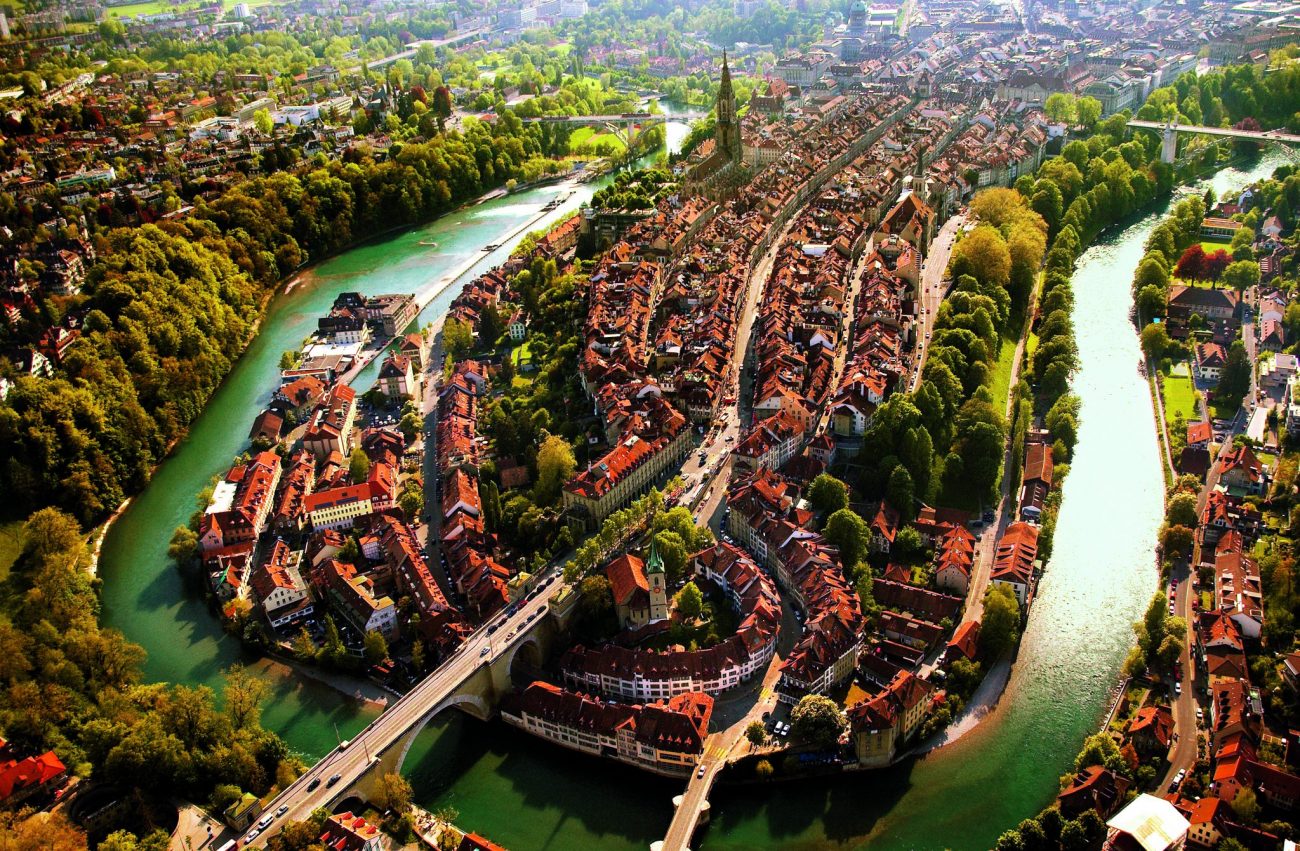Bern’s charms are blatantly obvious as I arrive in the Swiss capital, built as it is on top of a steep peninsula and nestled in the bend of the aquamarine Aare River – the characteristic color of glacier lakes. It’s almost picture perfect with narrow cobblestone streets framed by sandstone arcades and oriel windows. Exploring Bern reveals everything from punishments to temptations.
Birthplace of Einstein’s Theory of Relativity
I take the tram to the elevated rose garden for arguably the best unobstructed view of the Old Town and Aare Loop, extending far beyond the city, even to the Bernese Alps when the weather is clear. Only a few feet away, I pass Albert Einstein sitting on a bench (not the real one, of course). The famous scientist lived in Bern for only two years. Yet, here he developed his Theory of Relativity which turned the world of physics upside down.
The small apartment in Kramgasse 49 where he resided with his wife Mileva and young son Hans is open to the public. The second-floor residence, consisting of only two rooms, features original furnishings owned by Einstein as well as photographs and a small exhibit. Just like many Bernese during that time, the Einsteins’ had to share a kitchen and bath with another family.
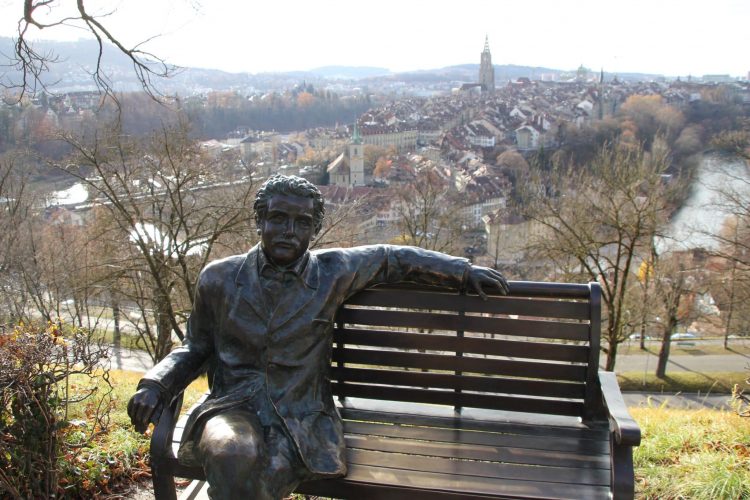
Exploring Bern’s Bears
On the same street as the Einstein House rises Bern’s landmark: the Zytglogge. The Clock Tower was the first western gate of the city. With its famous astronomical calendar clock built in 1530, it’s now one of the main attractions. Inside I again enjoy the views of the Old Town and marvel at the hour chimes, the two tower clocks, the mechanical figures and the astronomical clock. All are driven by a common mechanism. In Switzerland, Bernese people have a reputation for being clumsy and slow like the black bear on the city’s coat of arms. “But the rotating bears on the Zytglogge are not slow at all”, city guide Margarete Schaller quickly points out.
Real-life bears have been at home in Bern since 1513. Legend has it that the town’s founder, Berchtold V of Zähringen, named the city after killing one of the beasts during a hunt. Bern’s famed bear pits have housed generations of morose shaggies. Current residents, Finn, Björk and Ursina, can be observed playing, eating and swimming in the pool. A landscape has been created in which the bears can climb, fish, and play, but also retreat, especially for their winter hibernation.
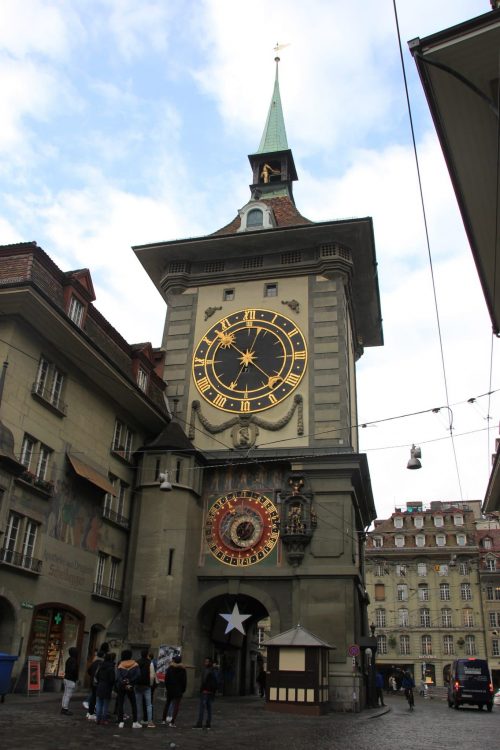
Indulge in the Berner Platte
Another place full of history and tradition is the basement of the Kornhaus (Granary). Here, towering sandstone arches and ceiling frescoes depict mythological figures and people in traditional clothing. A main course, the Berner Platte (“Bernese platter”), is a feast of ham, bacon, spare-ribs, knuckle of pork, bone marrow, sauerkraut, beans, and potatoes. The dish dates from March 5, 1798, when the Bernese defeated the French army at Neuenegg and, to celebrate, held a great banquet. Everyone brought whatever they could find – and the Berner Platte was born.
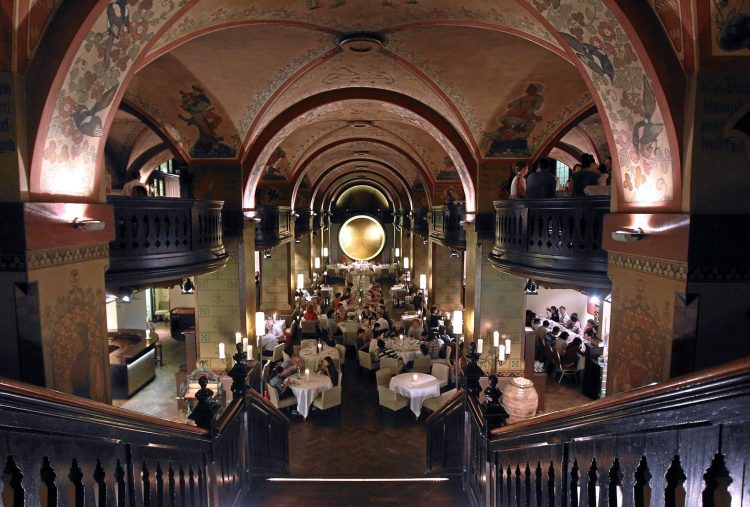
Water Water Everywhere
There are over 100 fountains dotting the city, many ornately decorated with figures. The fountains served their function as an “office water cooler” would today. Here, people met to gossip, exchange news, discuss politics and of course get a supply of water. Usually, women came to fill large copper pots for cooking and cleaning, and one could have it couriered for a small fee. As with many European fountains, the smaller lower basin at the bottom served horses and cows back in the old days, nowadays a thankful addition for dog owners.
Be it fountains, cisterns, the subterranean stream or the Aare River – water is omnipresent here. During the summer, the Aare River becomes the cooling spot for locals and tourists alike. Here, many swim in the milky, glacier-fed river. The exits are marked by red bars so swimmers can see where it is easy and safe to get in and out. Some locals even “swim” commute to work carrying their belongings packed in the “Aare bag.” This nylon waterproof bag with colorful designs could easily serve as an original and unique souvenir from the city.
I opt not to take the full plunge but instead get a taste of the water from one of the fountains, only to find that I have chosen one with a rather ominous looking statue – the Kindlifresserbrunnen. Nobody knows why the ogre appears to be devouring a struggling baby. Residents commonly believe the monster was meant to scare naughty children into behaving,” says local Ursula Arreger.
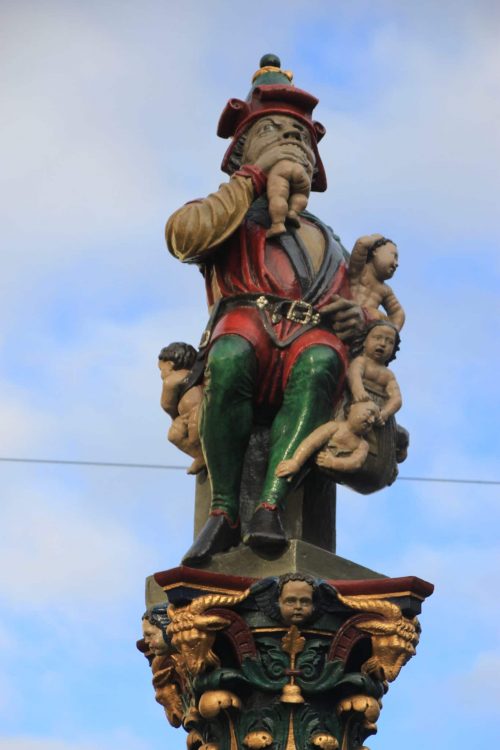
Exploring Bern’s Sweet Treats
From punishments to temptations, Bern is a city for those with a sweet tooth. Rudolf Lindt, son of a Bernese pharmacist, invented the “conche.” This machine mixes cocoa butter into chocolate, turning it into a confectionary and creating the chocolate industry as we know it today. Prior, chocolate mainly served as a drink. He sold the process and the factory to another chocolate manufacturer, Chocolat Sprüngli AG, for a tidy sum of 1.5 million Gold francs. Chocolat Sprüngli AG, changed the name to Chocoladefabriken Lindt & Sprüngli AG, arguably the most famous brand of high-quality chocolate in the world today.
But it’s not just chocolates that make Bern famous. Kambly cookies, a specialty found in many supermarkets in Switzerland and Germany, come from a small village outside Bern called Trubschachen. Remaining exactly the same for over 100 years, recipes still use butter from the village in production. In the factory store, you can have a free taste of everything before you buy. I make chocolate with Esther Brunn, a staff member who informs me that on busy days they give out nearly 900 lbs of cookies!
With my chocolate cooled and packed, I try not to sample too much before I buy a bag of chocolate meringue truffles. At CHF10.50 ($10.75) it’s not exactly cheap but the train ride to the airport has just become so much sweeter.
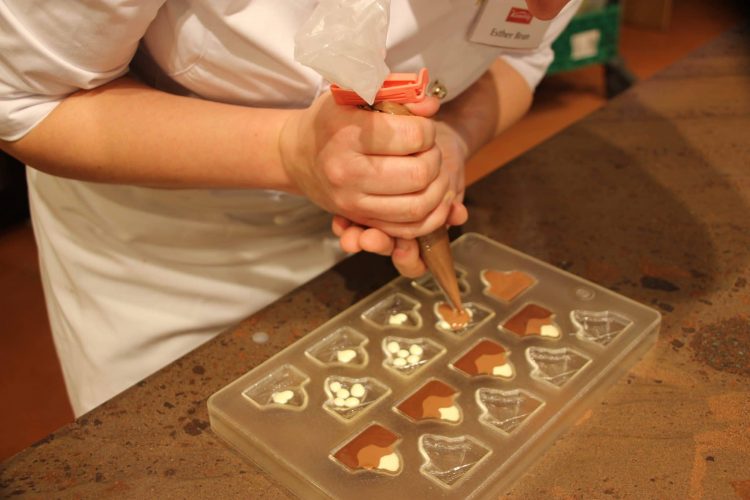
The country code for Switzerland is 41.
Editor’s Note: For the latest COVID travel restrictions to Switzerland, visit www.covid-19-info.
Where to Stay:
Hotel Allegro Bern – Located just across the river, the 4-star superior property charms with sweeping views of the Old Town and distant Bernese Alps from the rooms on the higher floors. www.kursaal-bern.ch
Hotel Alpenblick – This 3-star hotel is in the quiet residential district of Breitenrain yet within walking distance of the city center. In summer, take the lift to the roof where three beehives are installed. Then, buy the honey at the hotel reception. www.welcomehotels.ch/alpenblick
Where to Eat:
Altes Tramdepot – This rustic restaurant attracts young and old with hearty lunches and the locally made Tram-beer which is brewed 4-6 times weekly in the middle of the restaurant. The cuisine is a mix of international and regional dishes. www.altestramdepot.ch
Kornhauskeller – Bern’s most luxurious cellar restaurant is an institution. Sitting underneath high sandstone arches and striking ceiling frescoes while eating traditional specialties like the Bernese Platter is a real treat. www.bindella.ch/de/kornhauskeller.html
Casa Novo – “Going out means coming home” at this family-run tapas bar and vinoteca with a terrace next to the Aare River. The menu of market-fresh, seasonal Mediterranean cuisine is small but excellent. www.casa-novo.ch
What to Do:
Old Town – A well-preserved medieval townscape, earned the inner part of Bern the UNESCO World Heritage Site declaration in 1983. Discover sheltered arcades, narrow streets, well-kept sandstone facades and impressive buildings. Don’t miss the Zytglogge, a medieval tower with a large astronomical clock.
Einstein Museum – The museum documents the physicist’s life and times with original memorabilia, written records and documentary films. The Einstein Haus is the restored second floor apartment where the Nobel Prize winner lived from 1903 to 1905. www.bhm.ch; www.einstein-bern.ch
Kunstmuseum – The Museum of Fine Arts Bern became the sole recipient of the Gurlitt estate in 2014, deemed undesirable “degenerate” art by the Nazi regime. A selection from the collection is on display for the first time. www.kunstmuseumbern.ch
Kambly – Don’t miss a trip to the small village of Trubschachen. Kambly has epitomized the Swiss tradition of fine biscuits for four generations. The oldest product is the “Bretzeli”, produced since 1906 and invented by Oscar Kambly the first. www.kambly.com

